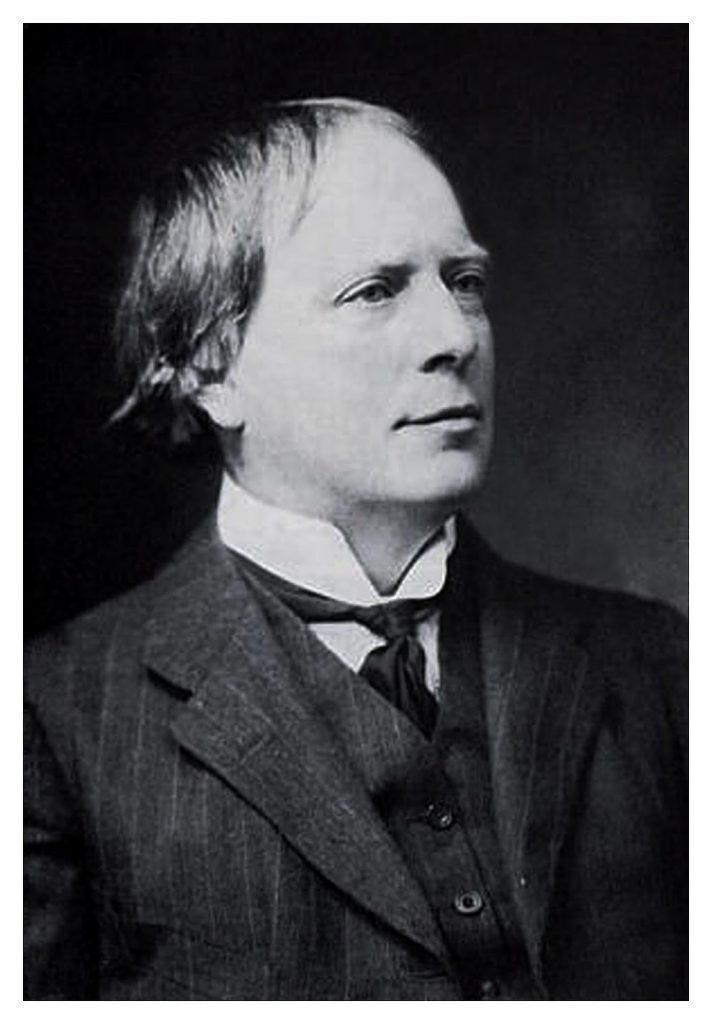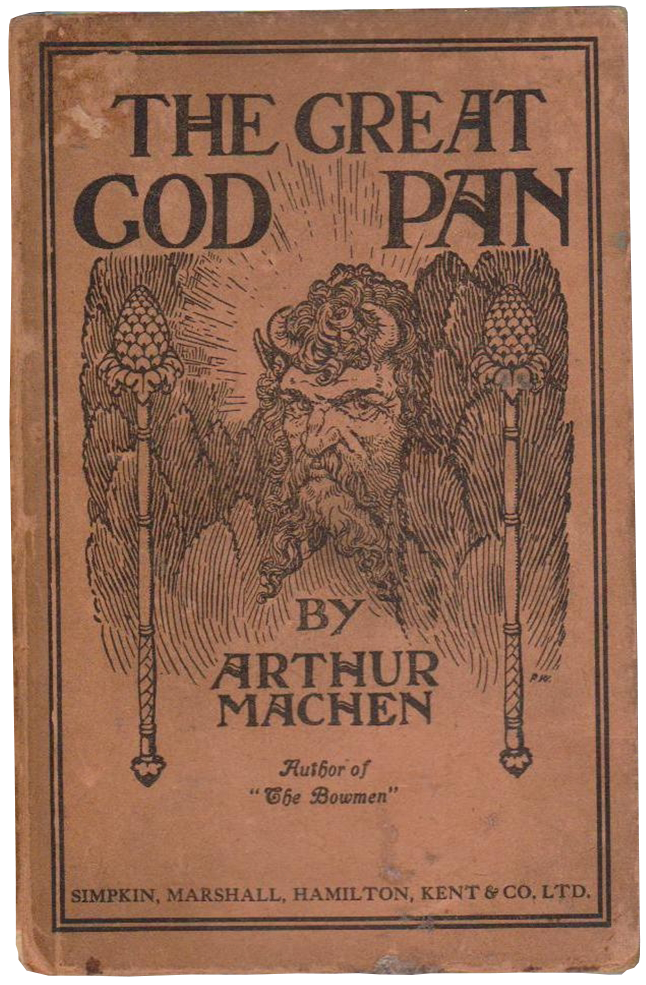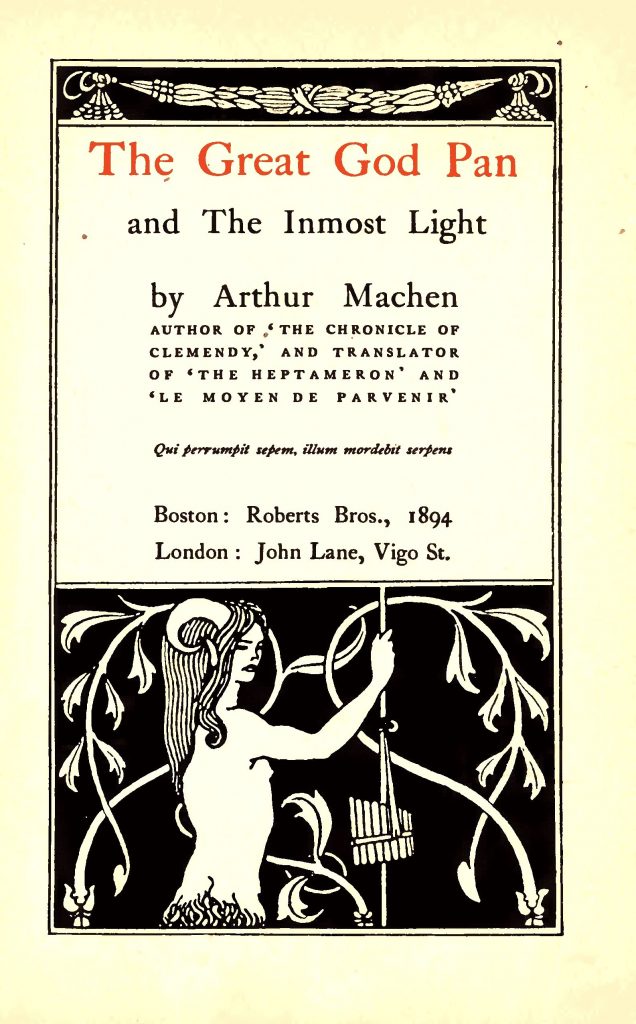
Our Appendix N Archeology and Adventures in Fiction series are meant to take a look at the writers and creators behind the genre(s) that helped to forge not only our favorite hobby but our lives. We invite you to explore the entirety of the series on our Adventures In Fiction home page.
Appendix N. Archaeology: Arthur Machen
by Bradley K. McDevitt
This article is part of a series where the spotlight shines on some authors that inspired the writers we acknowledge today as influencing the creation of Dungeons and Dragons. For those unfamiliar with his fiction, the late Victorian era Welsh author Arthur Machen was admired by contemporaries like Sir Arthur Conan Doyle and William Butler Yeats. Further relevant for this article, his work is an acknowledged influence by Appendix N authors such as Clark Ashton Smith, Robert E. Howard, and H.P. Lovecraft. Lovecraft even cheerfully admitted appropriating details like the god Nodens and reality-destroying language Aklo from Machen to be parts of the Cthulhu Mythos.

Machen (1863-1947), whose real last name was Jones, produced prolifically in the genres of fantasy and horror. His story The Bowmen entered the realm of urban folklore as World War One legend of the “Angel of Mons.” And that story was only a very tiny fraction of Machen’s output, which included works as The Novel of the White Powder, The Three Imposters, and what is generally acknowledged as his 1894 masterpiece, The Great God Pan. This terrifying tale of occult miscegenation was lauded thirty years later by Lovecraft in his essay The Supernatural In Literature. More recently, Stephen King has declared it, in his opinion, “one of the best horror stories ever written. Maybe the best in the English language.”
Readers will come to understand those authors’ reverence for Machen, and especially that story. The narrative itself starts on a disturbing scene, like Clarke, the protagonist of the early part of the story, accepts an invitation to oversee some home brain surgery his friend Dr. Raymond plans to perform on an orphan girl he took in years before. The setting is not even a surgical theater, just a home laboratory he has set up. It doesn’t go well. The girl is rendered hopelessly insane. The so-called surgeon can’t even be bothered to be upset, dismissing her with the comment, “After all, she has seen the great god Pan.”

For readers expecting shocks, The Great God Pan will seem to move very slowly at first as the rest of the story unfolds like a jigsaw puzzle across multiple chapters and characters, starting to come together to form a ghastly whole. Much like in Dracula and The Call of Cthulhu, characters, especially main protagonist Villiers, recount chance meetings, unnerving apartment tours, accidentally found portraits and art books. This is all accomplished with a mounting sense of dread, with nothing actually happening “on-screen” after that first fateful surgery.
The action starts to accelerate as an epidemic of suicides starts all
across London. While they are not described in-depth, what details Machen does
share are gruesome enough. The story follows Villiers’ investigation of the
mysterious Mrs. Beaumont’s true identity as it slowly spirals back to the early
part of the story, to horrifying effect.
The story’s epilogue is a transcript from a dead character’s private papers to the original character Clarke. One can easily see the influence here on Lovecraft’s later fiction, in classics like The Case of Charles Dexter Ward and The Call of Cthulhu, which similarly use letters to create a sense of verisimilitude.

Judges looking for inspiration for dungeons crawls will find little to help them in this story. However, those looking for mystery-oriented urban adventures can glean much from the text. The Victorian London setting, with its descriptions of the streets and shops of Piccadilly, is almost a character in and of itself. A discerning judge could use the story as a guide to how to make a city setting come alive, while the slow gathering and collating of clues would make for a very suspenseful adventure for a small group of players. It is also easy to see the influence of Machen’s exacting descriptions of London in seminal stories like Lovecraft’s The Haunter of the Dark or R.E. Howard’s legendary Pigeons from Hell. Much like adventures inspired by the Cthulhu Mythos, the main opponent Pan is never seen, but his influence looms over the events incomprehensible and undefeatable except in the short term. And that, in the end, leaves the readers with nothing but an inexorably growing sense of panic.
And be sure to visit our Adventures in Fiction home page to read about all the classic authors of Appendix N!
Stay connected with us on social media platform for instant update click here to join our Twitter, & Facebook
We are now on Telegram. Click here to join our channel (@TechiUpdate) and stay updated with the latest Technology headlines.
For all the latest Gaming News Click Here
